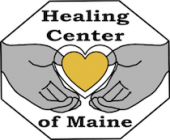Do you suffer from joint pain; rotator cuff, tennis elbow, carpal tunnel, or other joint pain? Rotator cuff and tennis elbow are two joint issues I have personally struggled with. This 3 part series will discuss how you can begin to heal your joint pain. Part 1 dealt with understanding how healthy joints function and what can go wrong. Part 2 demonstrated movements to assess your joint health and determine which joints need intervention to prevent injury. Finally, here, in Part 3, I will discuss methods for beginning to heal joint pain.
Joint Pain and Aging
Decreased range of motion accompanied by joint pain and arthritis are NOT an inevitable result of aging. In fact, arthritis is an autoimmune disease and a relative new-comer in modern diseases. “Many researchers believe that rheumatoid arthritis did not exist anywhere in the world before 1800. It is well documented that these forms of arthritis were once rare to non-existent in rural populations of Asia and Africa. As recently as 1957, no case of rheumatoid arthritis could be found in Africa.” 1
Magic Pill #1 – The Anti-Inflammatory Diet
Chronic inflammation in the body is characterized by many symptoms including joint pain. If you’re eating the standard American diet (SAD) you are eating foods which are very pro-inflammatory. A change in your diet may significantly reduce joint pain. Reduce inflammation by making the following diet changes;
- Eliminate toxins : alcohol, caffeine, hydrogenated oil (trans fats), high fructose corn syrup, food additives, processed food
- Avoid inflammatory foods: dairy(except kefir), refined flour, refined sugar, non-grass fed beef, non-free range poultry
- Eat more: organic fruits and berries, organic leafy greens and cruciferous vegetables, nuts & seeds, kefir, wild caught fish
Depending on your current diet, these suggestions may require a major change in your eating habits. Follow the recommendations found in Step 3 of our Pathway to Healing; Take the Long View and Make One Small Change at a Time. You have the rest of your life to work on your health. Make one small change at a time and stick with it until it not only becomes easy but also becomes a habit. A good habit! Then move on to the next small change. This is the way to truly change your health.
The SAD is very deficient in Omega-3 fatty acids, which have shown to be anti-inflammatory. Many with joint pain have reduced pain with a Cod Liver Oil supplement as a rich source of Omega-3 fatty acids. However, you must realize supplements can not overcome the effects of a poor diet because the absorption of nutrients is interdependent. The deficiency of key nutrients can prevent other nutrients from being absorbed and metabolized. Toxic food substances can also prevent nutrient absorption.
Magic Pill #2 – Movement
Note that magic pill #2 does not say exercise. The “movement” I’m referring to is moving the joints of the body through their full range of motion. This is not stretching, not resistance exercise, nor cardiovascular exercise. The range of motion you now enjoy, or suffer from, is an adaptation to your habitual patterns of movement.
For example, if your job has you working at a computer all day long your shoulders are experiencing almost no range of motion, which minimizes blood flow to the joint causing synovial fluid to be thicker and bursae to be less flexible. The tendons and ligaments shorten as an adaptation to this limited range of motion. In addition, if your posture is slumped, supporting muscles of the back overstretch while chest muscles shorten. Over time your body will adapt to these stresses and the full range of motion in your shoulders will gradually be lost.
Recovering your pain-free, full range of motion is a matter of movement. You must begin with the range of movement you currently have and day-by-day ease into a wider range of motion. Pavel Tsatsouline, in his excellent book Super Joints, recommends doing repetitions equal to your age on a daily basis. If you already have severely restricted range of motion you may need to do repetitions equaling several multiples of your age daily. An article describing these movements can be found at http://www.trainingdimensions.net/tdArticles/Joint%20Mobility.pdf
Begin very slowly. Move the joint just to the edge of its pain-free range. As you repeat your range of motion exercises day-after-day your range of motion will gradually expand. How long it takes will be determined in part on the current condition of your joints, but if you stick with it you will see results.
Personally I’m working on a rotator cuff issue. My range of motion has increased dramatically over the past several months. I’m now able to sleep on that shoulder without pain. I am not 100% pain free yet but plan on increasing the repetitions of my daily mobility exercises in the coming months. Good luck in you pursuit of pain-free joints!
1 Occhipinti, Mark M.S., Ph.D.,c, “Healthy Eating For Healthy Joints”, http://www.afpafitness.com/articles/articles-and-newletters/research-articles-index/nutrition-wellness/healthy-eating-for-healthy-joints/
Photo 1 – Judith Lautner (Author). (2010), https://picasaweb.google.com/lh/photo/yuNBEr2eBne3oykO9rUQFdMTjNZETYmyPJy0liipFm0?full-exif=true
Latest posts by Peter Wright, NTP, CGP (see all)
- Dehydrated Broth – Making It Easy to Drink Broth Every Day! - March 11, 2017
- Lose 10 lbs DURING the Holidays - November 19, 2016
- Finding Good Oils - February 7, 2016



No comments yet.